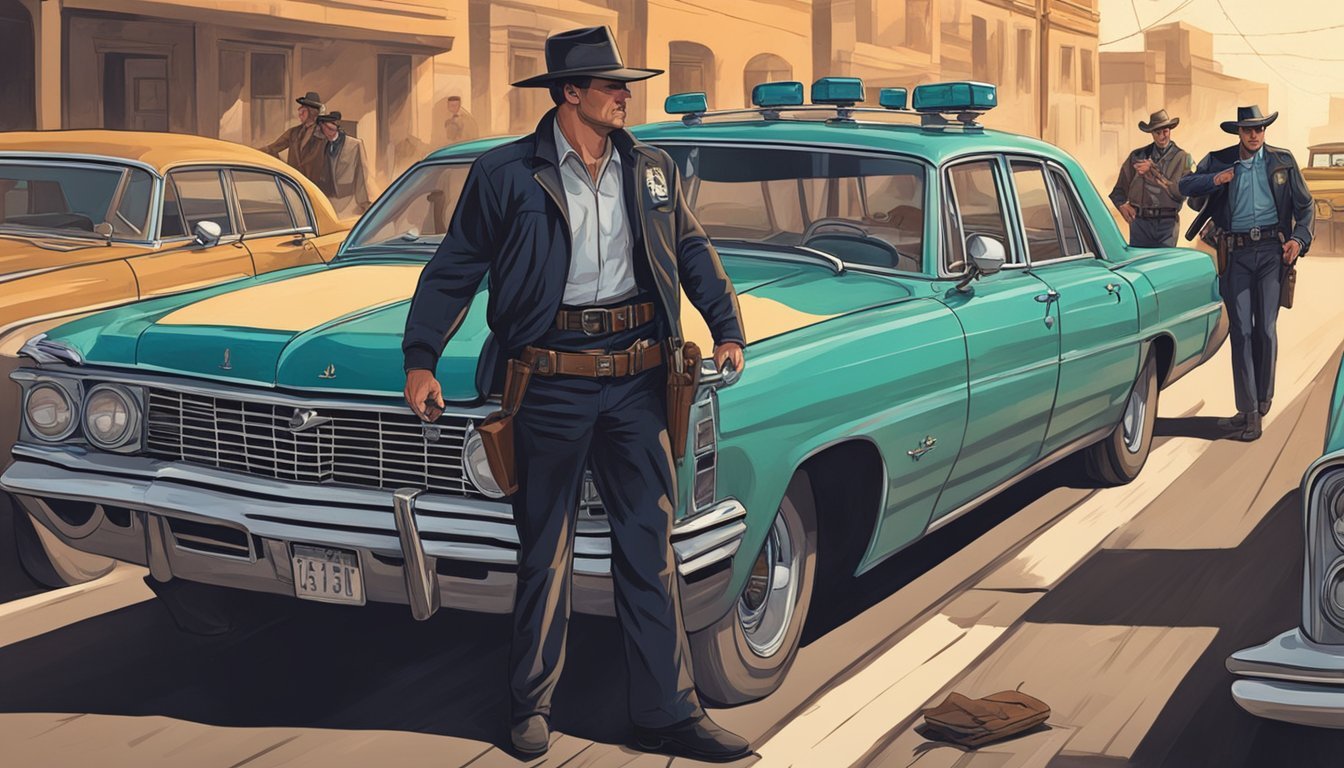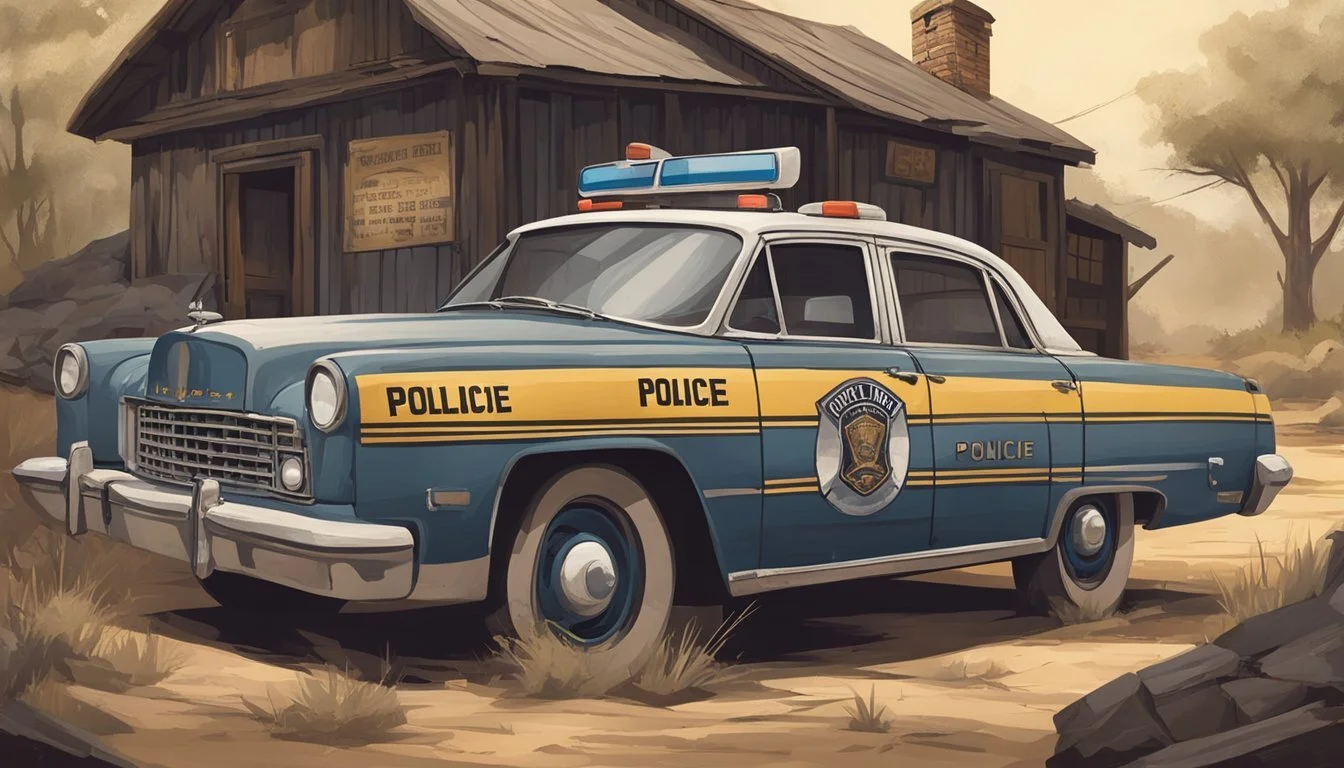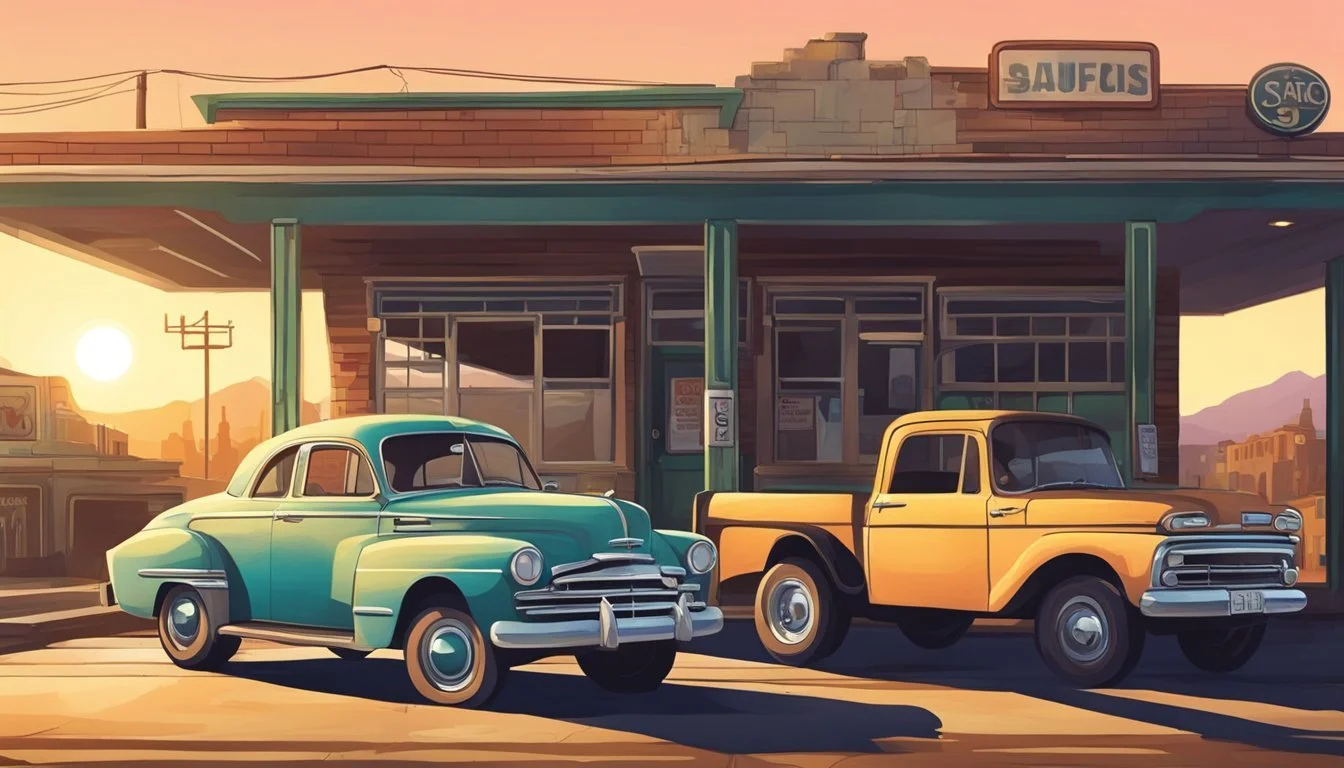Outlaws in Love: The Actual Crimes of Bonnie and Clyde
A Factual Account of Their Criminal Spree
Bonnie Parker and Clyde Barrow's crime spree in the 1930s captivated America during the Great Depression. The young couple's daring bank robberies and violent encounters with law enforcement made them infamous outlaws. Their story has since become a romanticized tale of love and rebellion.
Bonnie and Clyde's criminal activities were far more brutal than their glamorized image suggests. Between 1932 and 1934, they and their gang committed numerous armed robberies, burglaries, and murders across several states. Their targets included small stores, gas stations, and banks, leaving a trail of violence in their wake.
Despite their notoriety, Bonnie and Clyde's crime spree was relatively short-lived. Law enforcement caught up with the pair on a Louisiana highway in May 1934, ending their reign in a hail of gunfire. Their dramatic demise only served to solidify their place in American cultural mythology, blurring the lines between their actual crimes and their romanticized legend.
The Infamous Duo
Bonnie Parker and Clyde Barrow became notorious outlaws during the Great Depression. Their criminal escapades and tragic love story captured public imagination, transforming them into American folk heroes despite their violent crimes.
Bonnie Parker: From Waitress to Outlaw
Born in Rowena, Texas in 1910, Bonnie Parker led an ordinary life before meeting Clyde Barrow. She married Roy Thornton at 16 but soon separated from him. Bonnie worked as a waitress in Dallas when she encountered Clyde in 1930.
Their connection was immediate and intense. Bonnie quickly abandoned her conventional life to join Clyde's criminal pursuits. She participated in robberies and shootouts, gaining notoriety for her fearless demeanor and stylish appearance.
Contrary to popular belief, evidence suggests Bonnie never actually fired a gun during their crime spree. Her role was primarily as an accomplice and getaway driver.
Clyde Barrow: Early Life and Criminal Beginnings
Clyde Barrow was born in 1909 near Dallas, Texas. He grew up in a poor farming family and turned to petty crime as a teenager. His first arrest came at age 17 for automobile theft.
Clyde's criminal career escalated after meeting Bonnie. He led a gang that robbed banks, stores, and gas stations across several states. His proficiency with firearms and driving skills made him a formidable outlaw.
A stint in the notoriously harsh Eastham Prison Farm in Texas hardened Clyde further. After his release, he vowed never to return to prison, setting the stage for his violent confrontations with law enforcement.
Formation of the Barrow Gang
The Barrow Gang emerged in the early 1930s as a notorious group of outlaws led by Bonnie Parker and Clyde Barrow. Their criminal activities quickly escalated from small-scale robberies to more brazen heists across multiple states.
Notable Gang Members
Clyde Barrow recruited several individuals to join his gang. His brother Buck Barrow and Buck's wife Blanche became key members. Raymond Hamilton, Clyde's childhood friend, also played a significant role in the gang's operations.
William Daniel Jones, often called W.D. Jones, joined the gang as a teenager. He participated in numerous crimes alongside Bonnie and Clyde. Other associates came and went, but these core members formed the backbone of the Barrow Gang.
Early Crimes and Expanding Notoriety
The Barrow Gang's crime spree began in Dallas, Texas, with burglaries and auto thefts. They quickly progressed to more daring robberies of small stores and gas stations. Their tactics evolved, and they started targeting banks and other high-value targets.
As they expanded their operations into Oklahoma and other nearby states, the gang's notoriety grew. Law enforcement struggled to keep up with their rapid movements and increasingly violent methods. The gang's ability to evade capture and their willingness to engage in shootouts with police further enhanced their reputation as dangerous outlaws.
Crime Spree Across the States
Bonnie Parker and Clyde Barrow's crime spree from 1932 to 1934 left a trail of robberies and murders across multiple states. They targeted banks, stores, and gas stations, evading law enforcement through daring escapes and high-speed chases.
Robberies and Murders
The Barrow Gang primarily struck small businesses and rural banks. They robbed gas stations, grocery stores, and even funeral homes. Their tactics often involved quick hits and fast getaways.
Clyde's skill as a driver proved crucial in their escapes. The gang's crime spree spanned Texas, Oklahoma, Missouri, and Louisiana. They killed at least nine police officers and several civilians during their two-year rampage.
Bonnie and Clyde's notoriety grew with each crime. The public, struggling through the Great Depression, sometimes viewed them as folk heroes. This romanticized image contrasted sharply with the violent reality of their actions.
Significant Heists and Escapes
One of the gang's most notorious incidents occurred in Joplin, Missouri. They escaped a police shootout, leaving behind photographs that would make them famous. These images, published in newspapers, cemented their status as celebrity outlaws.
In January 1934, Clyde orchestrated a raid on Eastham Prison in Texas. He freed several inmates, including gang member Raymond Hamilton. This bold move intensified the manhunt for the Barrow Gang.
The couple's ability to cross state lines quickly complicated law enforcement efforts. They exploited jurisdictional limitations, often escaping before reinforcements could arrive. This tactic allowed them to continue their spree despite growing police pressure.
Law Enforcement Confrontations
Bonnie and Clyde's crime spree was marked by numerous violent encounters with law enforcement. Their notoriety grew with each confrontation, as did the determination of authorities to bring them to justice.
Shootouts and Narrow Escapes
The Barrow Gang frequently engaged in gunfights with police officers. One notable incident occurred in Joplin, Missouri, where they narrowly escaped a police raid on their hideout. The gang left behind photographs that would later become iconic images of the outlaws.
In Grapevine, Texas, Bonnie and Clyde ambushed two highway patrolmen, killing them in cold blood. This event turned public opinion sharply against the couple, eroding their Robin Hood-like image.
Another close call happened at Dexfield Park in Iowa. Surrounded by lawmen, the gang managed to slip away, though Bonnie was badly injured in the process.
The Legal Response to Bonnie and Clyde
As Bonnie and Clyde's crimes escalated, so did the efforts to capture them. The FBI, then known as the Bureau of Investigation, joined the manhunt. Texas Rangers, led by the legendary Captain Frank Hamer, were also brought in to track down the outlaws.
Law enforcement agencies across multiple states coordinated their efforts. They set up roadblocks, conducted stakeouts, and followed leads relentlessly. The authorities also targeted the couple's family members, hoping to gather intelligence on their whereabouts.
Bonnie and Clyde's brazen attack on Eastham Prison Farm in Texas, aimed at freeing Clyde's friend, further intensified the pursuit. This audacious act convinced lawmen that the duo would stop at nothing and needed to be stopped by any means necessary.
The Final Stand
Bonnie Parker and Clyde Barrow's crime spree reached its brutal conclusion in rural Louisiana. Their notorious saga ended in a hail of gunfire, leaving a lasting impact on American culture.
The Ambush in Bienville Parish
On May 23, 1934, law enforcement set a trap for Bonnie and Clyde near Gibsland, Louisiana. Six officers, led by former Texas Ranger Frank Hamer, concealed themselves along Highway 154 in Bienville Parish.
At 9:15 a.m., the outlaws' stolen Ford V8 approached. The posse opened fire, unleashing approximately 130 rounds in less than 20 seconds. Bonnie and Clyde were killed instantly, their bodies riddled with dozens of bullets.
The couple never had a chance to return fire or attempt escape. Their violent end matched the intensity of their criminal lifestyle.
Aftermath and Public Reaction
News of Bonnie and Clyde's deaths spread rapidly. Crowds gathered at the ambush site and the funeral home where their bodies were taken. Souvenir hunters collected items from the bullet-ridden car and crime scene.
Public opinion was divided. Some viewed the couple as dangerous criminals who met a deserved fate. Others saw them as folk heroes, romanticizing their outlaw lifestyle during the Great Depression.
Bonnie's poem "The Trail's End" proved eerily prophetic:
*"Some day they'll go down together; And they'll bury them side by side, To a few it'll be grief— To the law a relief— But it's death for Bonnie an
Bonnie and Clyde in American Culture
Bonnie Parker and Clyde Barrow have become iconic figures in American culture, their story captivating the public imagination for decades. Their exploits during the Great Depression era have been portrayed in various media, shaping public perception and mythology.
Portrayal in Media and Film
The 1967 film "Bonnie and Clyde" starring Warren Beatty and Faye Dunaway significantly impacted the outlaws' cultural legacy. This movie romanticized the couple, presenting them as rebellious anti-heroes fighting against an oppressive system.
The film's stylish portrayal and sympathetic treatment of the criminals resonated with audiences, particularly during the counterculture movement of the 1960s. It sparked a renewed interest in the Bonnie and Clyde story and influenced fashion trends of the time.
Other media adaptations followed, including books, songs, and television series. These portrayals often emphasized the couple's youth, passion, and daring exploits, sometimes at the expense of historical accuracy.
Impact on Public Perception and Mythology
The romanticized image of Bonnie and Clyde has persisted in American culture, often overshadowing the reality of their violent crimes. Their story has become a symbol of rebellion against authority and a twisted version of the American Dream.
This mythologized version of the couple has led to a complex legacy. Some view them as folk heroes who stood up to banks during the Great Depression. Others criticize this glorification, pointing out the suffering caused by their actions.
The enduring fascination with Bonnie and Clyde reflects broader themes in American culture, such as the allure of outlaw figures and the tension between individualism and social order. Their story continues to be reinterpreted and debated, maintaining its place in the American cultural landscape.
Investigation Techniques and Legal Outcomes
Law enforcement utilized innovative methods and coordinated efforts across state lines to track Bonnie and Clyde. Agencies adapted their approaches to counter the duo's evasive tactics and mobility.
Interstate Coordination and the FBI's Role
The Bureau of Investigation, precursor to the FBI, played a crucial part in the manhunt for Bonnie and Clyde. Agents coordinated with local police departments and highway patrolmen across multiple states.
This collaboration was essential due to the criminals' frequent border crossings. Law enforcement shared intelligence, fingerprints, and photographs to aid identification and tracking.
The Bureau's resources helped create a more comprehensive picture of the outlaws' movements. This information allowed authorities to anticipate potential targets and hideouts.
Innovations in Law Enforcement
To combat Bonnie and Clyde's superior firepower and vehicles, law enforcement adapted their equipment and tactics. Agencies began upgrading to more powerful weapons and faster cars.
Texas Ranger Frank Hamer led a six-man team that employed cutting-edge surveillance techniques. They used wiretaps and studied the couple's travel patterns to predict their movements.
Authorities also leveraged public engagement, distributing wanted posters and encouraging citizens to report sightings. This strategy proved effective in narrowing the search area.
The pursuit of Bonnie and Clyde accelerated the modernization of American law enforcement. It highlighted the need for better inter-agency communication and technological advancements in crime-fighting.
Reflections on the Era and the Outlaw Legacy
The Great Depression created unique conditions that shaped public perception of criminals like Bonnie and Clyde. Their story continues to influence views on crime and outlaw culture.
The Great Depression and Crime
Widespread poverty and desperation during the 1930s led some to turn to crime. Banks became targets of public anger due to foreclosures and financial hardships. This environment allowed outlaws like Bonnie and Clyde to gain sympathy from some segments of society.
The Barrow Gang's robberies of small stores and gas stations resonated with struggling Americans. Their attacks on banks tapped into anti-establishment sentiments. However, their violent methods and murders contradicted any Robin Hood image.
Law enforcement struggled to respond effectively due to limited resources. This enabled Bonnie and Clyde's multi-state crime spree to continue for years.
Comparisons with Contemporary Outlaws
Bonnie and Clyde were part of a wave of Depression-era outlaws that captured public attention. Other notorious figures included John Dillinger and Pretty Boy Floyd.
These criminals often targeted banks and flaunted their exploits. They became folk heroes to some, despite their violent acts. The media coverage of their crimes and pursuits created a mystique around outlaw culture.
The Red Crown Tavern shootout highlighted the danger posed by these gangs. It demonstrated their willingness to engage in gun battles with law enforcement.
Modern perceptions of these outlaws tend to romanticize their stories. This overlooks the brutal reality of their crimes and the victims they left behind.




